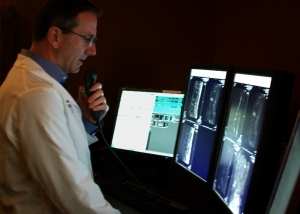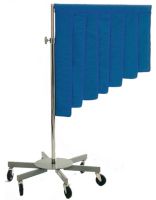What is the ALARA Principle?
ALARA is an acronym used in radiation safety for “As Low As Reasonably Achievable.” The ALARA radiation safety principle is based on the minimization of radiation doses and limiting the release of radioactive materials into the environment by employing all “reasonable methods.” ALARA is not only a sound radiation safety principle, but it is a regulatory requirement for all “radiation protection programs.” The ALARA concept is an integral part of all activities that involve the use of radiation or radioactive materials and can help prevent unnecessary exposure as well as overexposure. The three major principles to assist with maintaining doses “As Low As Reasonably Achievable” are time, distance and shielding.How can you reduce external radiation exposure?
1. Time
Reducing the time of exposure can directly reduce radiation dose. Dose rate is the total amount of radiation absorbed relative to its biological effect. Dose rate is the rate at which the radiation is absorbed. Limiting the time of radiation exposure will reduce your radiation dose.
2. Distance
Increasing the distance between you and the radiation source you will reduce exposure by the square of the distance. Doubling the distance between your body and the radiation source will divide the radiation exposure by a factor of 4.
3. Shielding
Lead or lead equivalent shielding for X-rays and gamma rays is an effective way to reduce radiation exposure. There are various types of shielding used in the reduction of radiation exposure including lead aprons, mobile lead shields, lead glasses, and lead barriers. When working in radiation areas it is important to use shielding whenever possible.
How can you reduce internal radiation exposure?
1. Good Hygiene
Practicing good hygiene and housekeeping habits effectively moderate the internal radiation hazards presented by radionuclides. By eliminating the presence of food and drink in areas where radioactive materials are used or stored, and controlling “hand to mouth” habits, the risk of internal radiation exposure is reduced.
2. Control of Contamination
Labeling radioactive and potentially radioactive areas and items will help prevent the spread of contamination. It is important to control contamination with absorbent papers and spill trays and placing any contaminated item in a properly labeled waste container. When a contamination occurs it is important to promptly decontaminate the area to prevent the spread of the contaminate.
3. Airborne Hazards
Using fume hoods and avoiding dust, aerosol, or volatile gas production can reduce the potential for inhalation of radioactive substances.
4. Use Proper PPE
Using the proper personal protective equipment (PPE) such as disposable gloves, safety glasses, lab coats, etc. will help reduce the possibility of ingestion or absorption of radioactive materials.
It’s very important to understand how to protect your medical staff and patients when working around high frequency radiation and to be aware of ways to reduce the level of radiation exposure. It takes a team effort to successfully implement the ALARA principles. ALARA should be a routine element of your work in radiological areas.
Explore Our Lead Aprons

Thanks for the info. I’m a Diagnostic Radiography student at Evelyn Hone college, Zambia. Radiation is both magnificent and catastrophic if handled properly and carelessly respectively